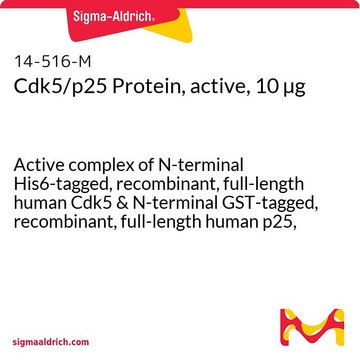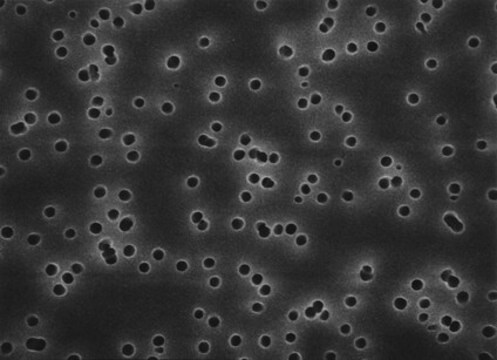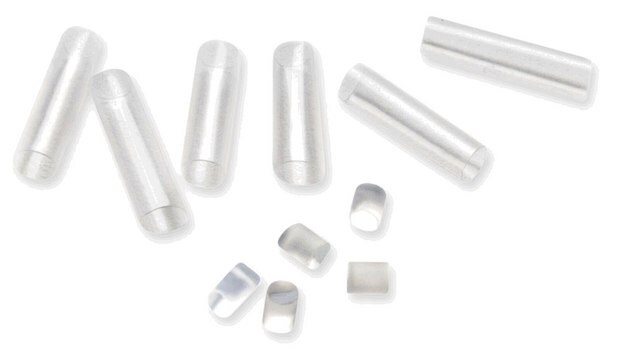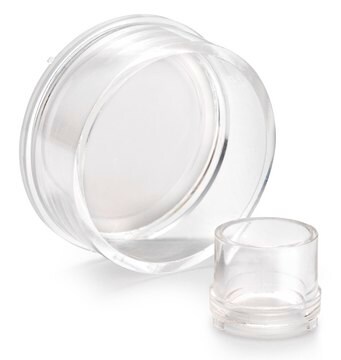MABF3145
Anti-Envelope glycoprotein B Antibody, HCMV Antibody, clone 27-156
Synonim(y):
gB
About This Item
Polecane produkty
pochodzenie biologiczne
mouse
Poziom jakości
forma przeciwciała
purified antibody
rodzaj przeciwciała
primary antibodies
klon
27-156, monoclonal
masa cząsteczkowa
calculated mol wt 101.95 kDa
observed mol wt ~120-140 kDa
oczyszczone przez
using protein G
reaktywność gatunkowa
virus
opakowanie
antibody small pack of 100 μg
metody
ELISA: suitable
immunocytochemistry: suitable
immunofluorescence: suitable
immunoprecipitation (IP): suitable
neutralization: suitable
western blot: suitable
izotyp
IgG2bκ
sekwencja epitopowa
C-terminal half
numer dostępu Protein ID
numer dostępu UniProt
temp. przechowywania
-10 to -25°C
informacje o genach
vaccinia virus ... HA(3654615)
Opis ogólny
Specyficzność
Immunogen
Zastosowanie
Evaluated by Western Blotting with recombinant HCMV glycoprotein B.
Western Blotting Analysis (WB): A 1:200,000 dilution of this antibody detected recombinant HCMV glycoprotein B.
Tested applications
Immunoprecipitation Analysis: A representative lot immunoprecipitated HCMV Envelope glycoprotein B in Immunoprecipitation applications (Reschke, M., et al. (1995). J Gen Virol. 76(Pt1); 113-22; Meyer, G.A., et al. (2000). J Biol Chem. 275(6); 3857-66; Vanarsdall, A.L., et al. (2008). J Virol. 82(23);11837-50).
Immunocytochemistry Analysis: A representative lot detected HCMV Envelope glycoprotein B in Immunocytochemistry applications (Reschke, M., et al. (1995). J Gen Virol. 76(Pt1); 113-22; Jean, F., et al. (2000). Proc Natl Acad Sci USA. 97(6); :2864-9; Meyer, G.A., et al. (2000). J Biol Chem. 275(6); 3857-66; Strive, T., et al. (2002). J Virol. 76(3); 1252-64).
Neutralizing: A representative lot neutralized Envelope glycoprotein B of HCMV. (Schoppel, K., et al. (1996). Virology. 216(1);133-45; Kropff, B., et al. (1997). J Gen Virol. 78(Pt8); 1999-2007; Vanarsdall, A.L., et al. (2008). J Virol. 82(23); 11837-50).
Immunofluorescence Analysis: A representative lot detected HCMV Envelope glycoprotein B in Immunofluorescence applications (Reschke, M., et al. (1995). J Gen Virol. 76(Pt1);113-22; Jean, F., et al. (2000). Proc Natl Acad Sci USA. 97(6); 2864-9; Meyer, G.A., et al. (2000). J Biol Chem. 275(6); 3857-66; Strive, T., et al. (2002). J Virol. 76(3); 1252-64; Vanarsdall, A.L., et al. (2008). J Virol. 82(23); 11837-50).
ELISA Analysis: A representative lot detected HCMV Envelope glycoprotein B in ELISA applications (Sharma, S., et al. (2013). Virology. 435(2); 239-49).
Western Blotting Analysis: A representative lot detected HCMV Envelope glycoprotein B in Western Blotting applications (Reschke, M., et al. (1995). J Gen Virol. 76(Pt1); 113-22; Schoppel, K., et al. (1996). Virology. 216(1); 133-45; Kropff, B., et al. (1997). J Gen Virol. 78(Pt8);1999-2007; Jean, F., et al. (2000). Proc Natl Acad Sci USA. 97(6); 2864-9; Sharma, S., et al. (2013). Virology. 435(2); 239-49; Khanh Le-Trilling, V. T., et al. (2020). Cell Rep. 30(7); 2248-2260).
Note: Actual optimal working dilutions must be determined by end user as specimens, and experimental conditions may vary with the end user.
Postać fizyczna
Przechowywanie i stabilność
Inne uwagi
Oświadczenie o zrzeczeniu się odpowiedzialności
Nie możesz znaleźć właściwego produktu?
Wypróbuj nasz Narzędzie selektora produktów.
Kod klasy składowania
13 - Non Combustible Solids
Klasa zagrożenia wodnego (WGK)
WGK 1
Temperatura zapłonu (°F)
Not applicable
Temperatura zapłonu (°C)
Not applicable
Certyfikaty analizy (CoA)
Poszukaj Certyfikaty analizy (CoA), wpisując numer partii/serii produktów. Numery serii i partii można znaleźć na etykiecie produktu po słowach „seria” lub „partia”.
Masz już ten produkt?
Dokumenty związane z niedawno zakupionymi produktami zostały zamieszczone w Bibliotece dokumentów.
Nasz zespół naukowców ma doświadczenie we wszystkich obszarach badań, w tym w naukach przyrodniczych, materiałoznawstwie, syntezie chemicznej, chromatografii, analityce i wielu innych dziedzinach.
Skontaktuj się z zespołem ds. pomocy technicznej








